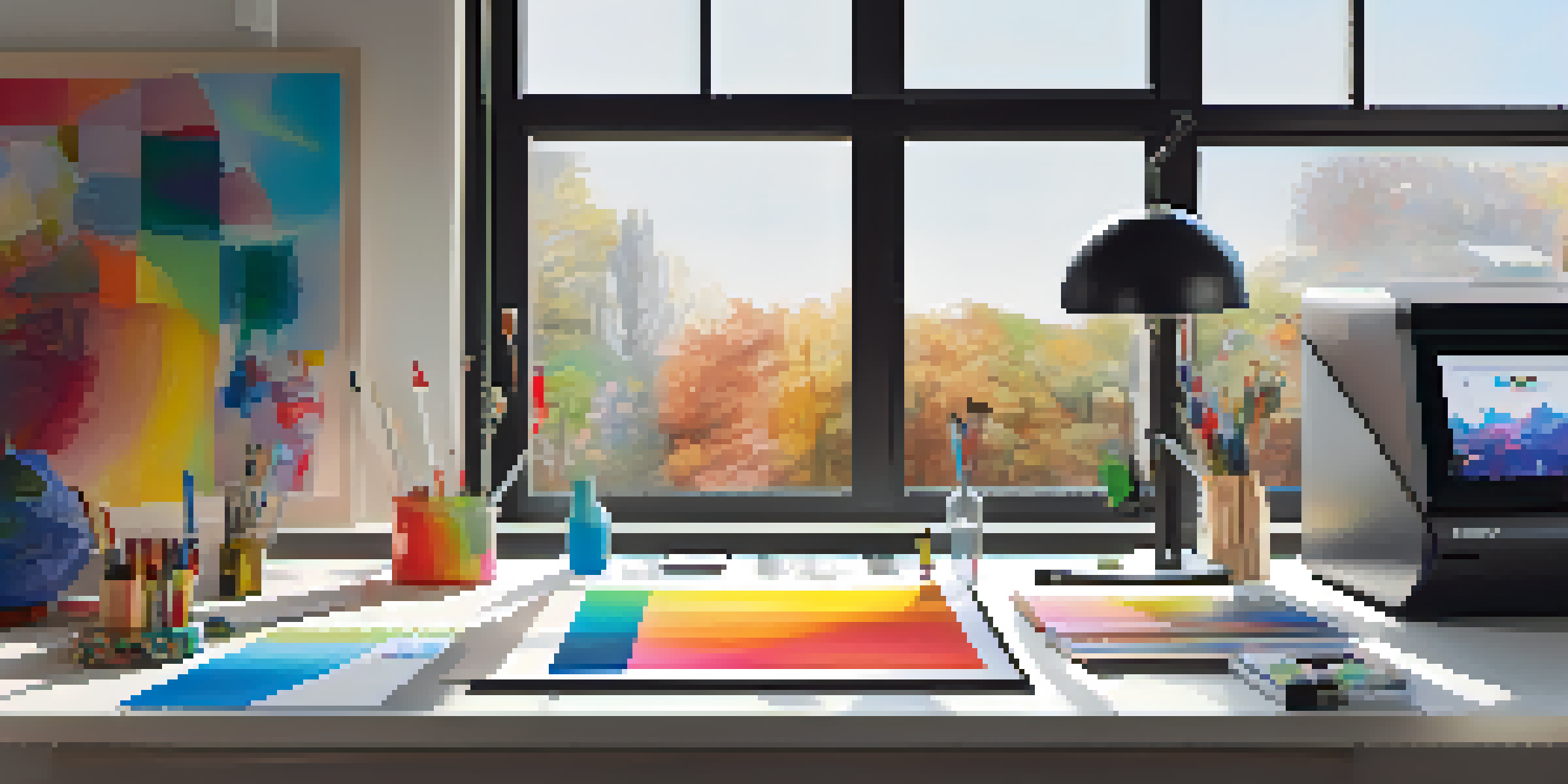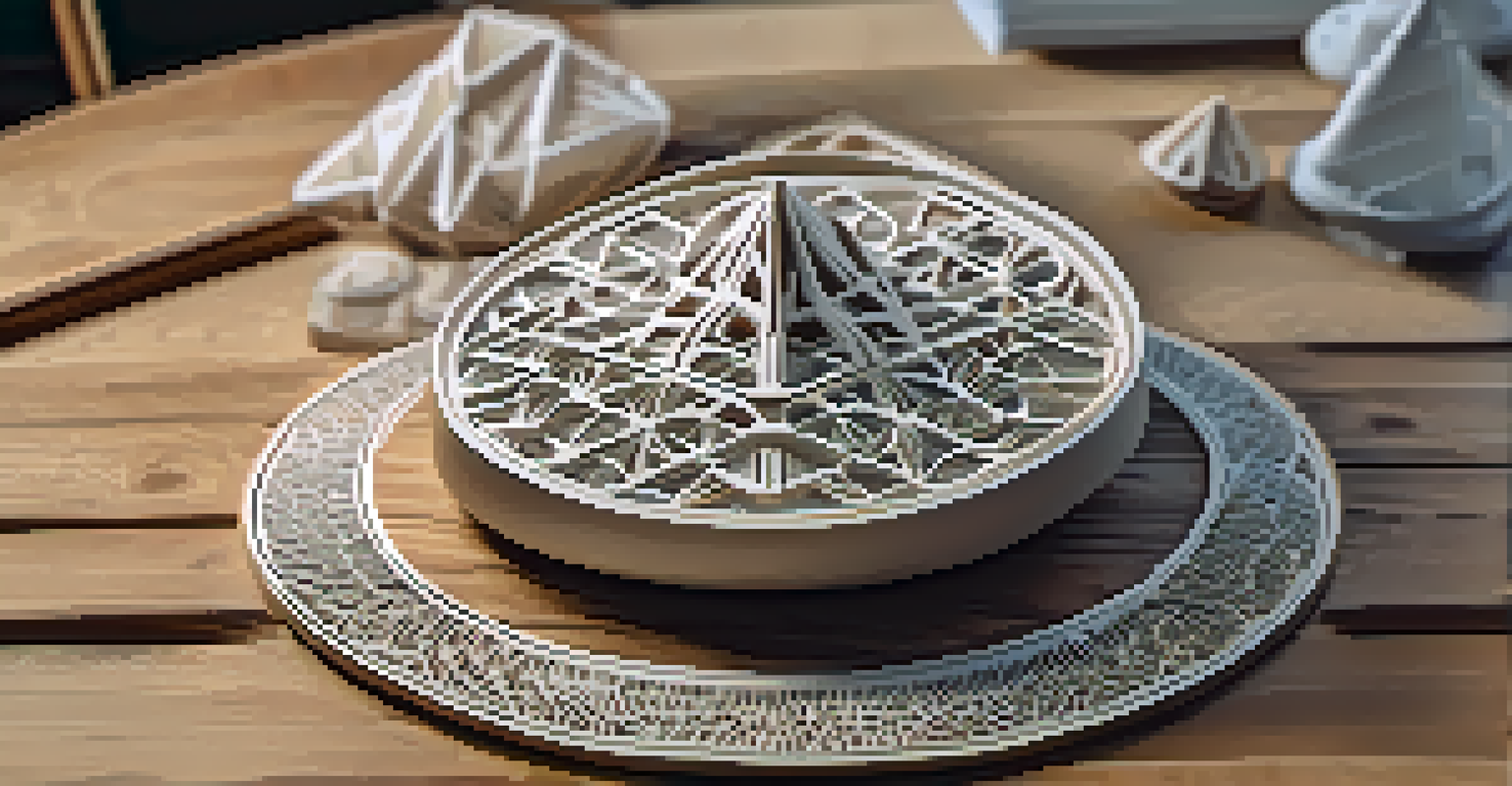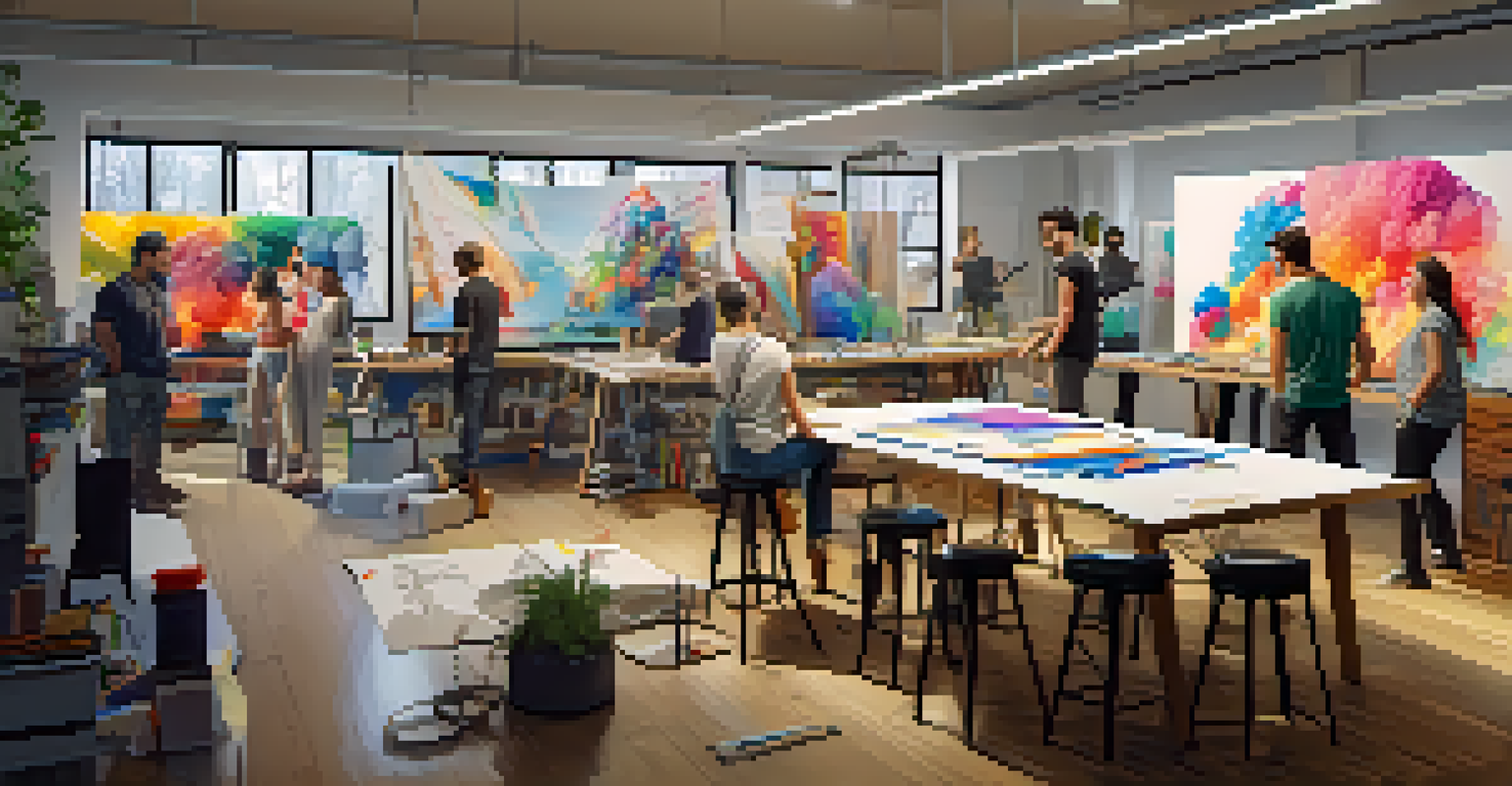3D Printing in Carving: New Possibilities for Artists

What is 3D Printing and Its Role in Carving?
3D printing is a fascinating process that creates three-dimensional objects from digital models. For artists, this technology opens up a new realm of possibilities in the world of carving, allowing for intricate designs that were once difficult to achieve by hand. Imagine being able to produce a detailed sculpture with precision that surpasses traditional methods.
3D printing is not just a new technology; it’s a new way of understanding creativity.
This innovative approach combines creativity with technology, enabling artists to experiment with shapes and structures that might be too complex or time-consuming to carve manually. By utilizing computer-aided design (CAD) software, they can visualize their work before it even begins to take form. This means fewer mistakes, less waste, and ultimately, a more refined final product.
Moreover, the ability to produce multiple copies of a design quickly can be a game-changer for artists looking to sell their work or expand their portfolio. 3D printing allows for unique personalization, from custom textures to varying sizes, catering to diverse artistic visions.
Benefits of 3D Printing for Artists
One of the standout benefits of 3D printing is the speed it brings to the carving process. Traditional carving can take days, weeks, or even months, while 3D printing can create complex designs in a matter of hours. This efficiency means artists can spend more time focusing on their creative ideas rather than the labor of execution.

Additionally, 3D printing allows for a broader range of materials compared to traditional carving. Artists can experiment with plastics, resins, and even metals, resulting in diverse textures and finishes that can elevate their work. This flexibility encourages innovation, pushing artists to explore new styles and techniques.
3D Printing Revolutionizes Carving
3D printing combines technology and creativity, allowing artists to create intricate designs with precision that traditional methods struggle to achieve.
Finally, the accessibility of 3D printing technology has made it easier for aspiring artists to enter the field. With affordable printers and user-friendly software, even those with minimal experience can start creating stunning pieces. This democratization of art-making fosters a vibrant community of creators who can share their journeys and inspire one another.
Challenges and Limitations of 3D Carving
Despite its many advantages, 3D printing in carving isn't without its challenges. One significant hurdle is the learning curve associated with CAD software and printer operation. Artists who are used to traditional methods may find it daunting to adapt to this technology, requiring time and patience to master the tools.
The future belongs to those who believe in the beauty of their dreams.
Moreover, while 3D printed pieces can achieve remarkable precision, they may lack the organic feel and character that hand-carved works possess. Many artists pride themselves on the unique imperfections that come from their hands, which can be difficult to replicate with a machine. This raises questions about authenticity and the emotional connection between the artist and their work.
Lastly, the initial investment in 3D printing technology can be steep. High-quality printers and materials can be expensive, which might deter some artists from making the switch. However, as technology continues to evolve and become more accessible, it’s likely that these barriers will gradually diminish.
Inspiring Examples of 3D Printing in Art
Many artists are already embracing 3D printing as a tool for their carving projects, showcasing the technology's potential. For instance, artist Ivan Sentch has created stunning sculptures that blend traditional aesthetics with modern techniques, utilizing 3D printing to achieve intricate details that would be nearly impossible by hand. His work exemplifies how 3D printing can enhance artistic expression.
Another notable example is the collaboration between artists and architects, where 3D printing has been used to create large-scale installations. These pieces often challenge conventional design and incorporate elements that push the boundaries of what we consider art. The fusion of art and technology in this way inspires new generations of creators to think outside the box.
Accessibility Boosts Artistic Expression
The rise of affordable 3D printing technology makes it easier for aspiring artists to enter the field, fostering a vibrant community of creators.
Furthermore, educational institutions are beginning to integrate 3D printing into their art programs, encouraging students to explore this medium from an early age. By providing resources and guidance, they help cultivate a new wave of artists who are excited to incorporate technology into their work, ensuring the continued evolution of carving in the art world.
The Future of 3D Printing in Carving
Looking ahead, the future of 3D printing in carving is bright and full of potential. As technology advances, we can expect improvements in printing speed, material options, and overall design capabilities, allowing artists to push their creativity even further. The integration of artificial intelligence in design software could also streamline the creative process, providing artists with new tools to enhance their work.
Moreover, collaborations between artists and tech companies will likely lead to innovative applications of 3D printing in various artistic disciplines. From fashion to sculpture, the possibilities are endless, and artists will have the opportunity to redefine their craft in exciting ways. This emerging relationship between art and technology promises to inspire new forms of expression that we have yet to imagine.
As more artists adopt 3D printing, we may also see a shift in the perception of art itself. The boundaries between traditional and digital art will blur, opening up discussions about what constitutes 'real' art. This evolution can lead to a richer dialogue about creativity and the role of technology in our lives.
Sustainability and 3D Printing in Art
Sustainability is becoming an increasingly important consideration in the art world, and 3D printing offers unique solutions to this challenge. By reducing waste through precise manufacturing processes, artists can create works with minimal environmental impact. This aspect appeals to many contemporary artists who are passionate about eco-friendly practices.
Additionally, the possibility of using recycled materials in 3D printing opens the door to innovative approaches in carving. Artists can experiment with creating beautiful pieces from repurposed materials, blending sustainability with creativity. This not only contributes to environmental conservation but also adds a unique narrative to the artwork.
Sustainability in Art Practices
3D printing offers eco-friendly solutions by reducing waste and enabling the use of recycled materials, promoting sustainable art-making practices.
As artists continue to explore sustainable practices, the integration of 3D printing can inspire a broader movement within the art community. By championing environmentally conscious methods, artists can lead by example, encouraging others to think critically about their materials and processes.
Getting Started with 3D Printing as an Artist
For artists interested in exploring 3D printing, the first step is familiarizing themselves with the technology. There are numerous online resources, tutorials, and community forums dedicated to helping newcomers learn the basics of CAD software and printer operation. Engaging with these communities can provide valuable insights and support during the learning process.
Next, artists should consider experimenting with 3D printing projects that align with their existing skills. Start small with simple designs before gradually tackling more complex creations. This approach allows artists to build confidence and proficiency while discovering how 3D printing can complement their carving techniques.

Finally, networking with other artists who use 3D printing can be incredibly beneficial. Collaborating on projects, sharing tips, and attending workshops can foster a sense of community and inspire new ideas. As artists support one another in their journeys, the creative possibilities of 3D printing in carving will continue to expand.